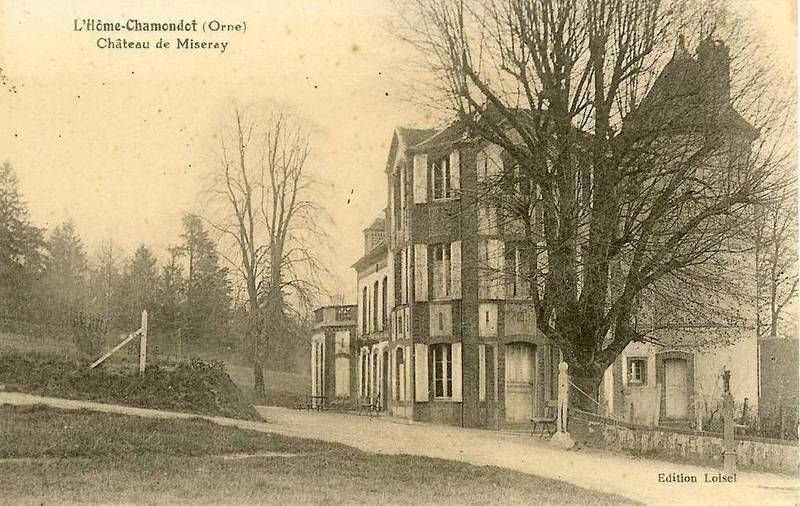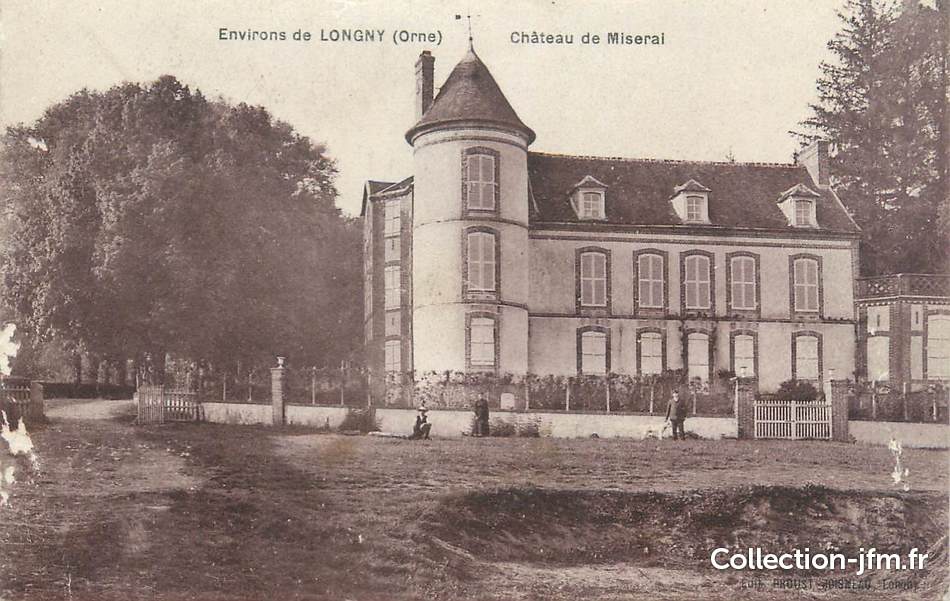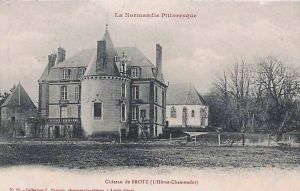
Miserai’s history is closely linked to Brotz, the neighboring chateau. Until the late eighteenth century, Brotz was a parish within the Diocese of Chartres. The parish was eliminated in 1792 during the French Revolution, it then became a municipality until 1812, date of its merger with l’ Home Chamondot.
The parish and the municipality of Brotz included the Chateau which dates back to the fourteenth century, the church, dovecote and surrounding buildings. The property also included forests, land, ponds, a water mill and several farms including Miserai.
The Chateau of Brotz was rebuilt and expanded several times over the ages with a large round tower, a de consecrated church dedicated to the Virgin Mary and the remarkable octagonal brick dovecote.
The first known lord is Jehan Le Picart, alias Huval, lord of Brotz in 1413.
In 1450, his daughter Jeanne de Huval named “La Picarde” married Guillaume Le Boulleur d’Alencon who had been knighted in 1449 by the King at the request of the Duke of Alençon for helping him penetrate the city in order to push off the British.
Ten generations of Le Boulleur have succeeded in Brotz. The last of the Le Boulleur de Brotz: Jean René Joseph Le Boulleur, knight, Earl of Brotz, lord of the estate, born in 1714 acquired the office of Master of Water and Forests of the Perche County.However, at his death in 1774, the estate showed significant liabilies and the chateau was described in archived documents to be in a total state of abandon. Luckily, his widow Lady of Brotz born Anne-Catherine-Nicole du Plessis who was separated from her husband and lived in Chartres was able to save the estate in her capacity of priority lienholder.
Mr. and Mrs.Le Boulleur de Brotz had five children, three of whom died in infancy.
Madame de Brotz died in Chartres in 1788 and left two daughters: Madame de Monhoudou born in 1736 Marguerite-Angelique-Antoinette Le Boulleur and Madame de Carpentin born in 1738 Jeanne-Elisabeth-Charlotte Le Boulleur. The first inherited the Chateau de Brotz as well as half of the domain, the second inherited Miserai with the other half of the estate including the Brotz watermill.
Widowed in 1784, Madame de Carpentin after a period of ups and downs during the revolution emigrated to England and moved back to France to live hidden in Rouen.
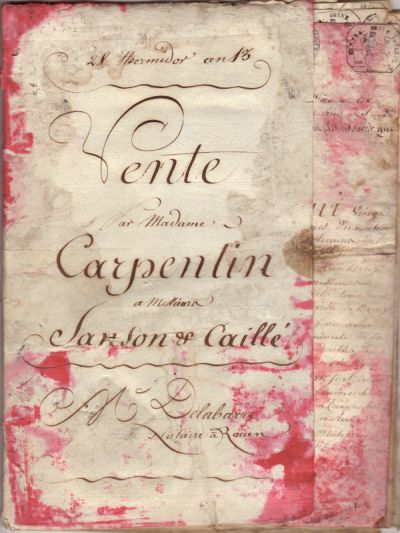
In this city, the 28 Thermidor of Year 13 (August 16, 1805) in front of Master Delabarre, notary, she sold Miserai for the sum of twenty-two thousand five hundred Francs to Mr Aimable Sanson and François-Auguste Caillé, silk merchants in Dreux.
It is interesting to note Mr. Aimable Sanson was the son of Charles-Henri Sanson (1739 – 1806), the Royal Executioner of France during the reign of King Louis XVI and High Executioner of the First French Republic. Charles Henri Sanson administered capital punishment in the city of Paris for over forty years, and by his own hand executed nearly 3,000 people, including the King himself. Madame de Carpentin died in 1825 without children.
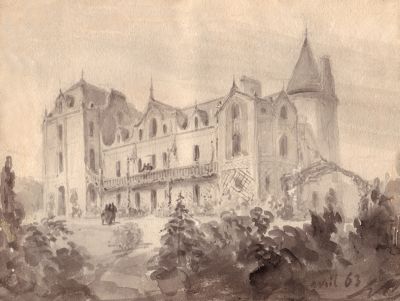
Mr. Aimable Sanson, who died in Paris September 2, 1847 left three heirs including his daughter Geneviève-Eugénie Sanson wife of Mr. Felix Boudet de Dramard who was born May 22, 1806.
Geneviève-Eugénie Boudet de Dramard and her husband became the masters of Miserai in 1847. Mr. Felix Boudet de Dramard, eminent chemist was a member of the Imperial Academy of Medicine. In the archives, many documents attest to his management of Miserai. He transformed the main farm house into a chateau with the addition of the tower, the kitchen area and the wing which today houses the main dining room. He also built the guest house, carriage house, kennel and stables in close proximity of the chateau. You can see on the right a construction project dated April 1863 that luckily never saw the light of day.
So the farm buildings, watermill and the old part of the chateau date from the seventeenth century. The Chateau’s improvements, guesthouse and attached buildings are from the nineteenth century.
Mr. Felix Boudet de Dramard died in 1878, his wife Genevieve-Eugenie continued to manage the estate as indicated in many archived documents. She later left Miserai to her two children Henri-Eugene and Pierre-Aimable.
Henri-Eugene and Pierre Aimable put the estate for sale in 1928 at the notary of St Maurice Les Charencey. Mr. Judicaël Levesque while traveling between his farm in Marcouville, Eure and Pont Foret, his in law’s estate in Brittany passed through St Maurice. He noticed this beautiful forested estate offered for sale and decided to acquire it.
Since then, the Levesque family has maintained the continuity of the estate for three generations in respect of this legacy.
Written by Eric Leys, owner of the Chateau de Brotz, in collaboration with Dominique Levesque, owner of Miserai.
